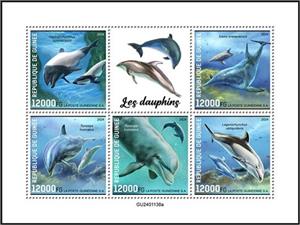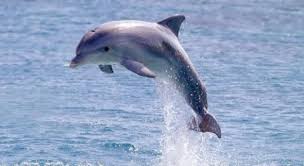Mini Sheet: Dolphins (Guinea 2024)
Dolphins (Guinea 2024)
07 March (Guinea ) within release Dolphins (2024) goes into circulation Mini Sheet Dolphins face value 5*12000 Guinean franc
| Mini Sheet Dolphins in catalogues | |
|---|---|
| Colnect codes: | Col: GN 2024.03.07-253 |
Mini Sheet is square format.
Also in the issue Dolphins (2024):
- Mini Sheet - Dolphins face value 6*8500;
- Souvenir Sheet - Cephalorhynchus hectori face value 52,000;
- Souvenir Sheet - Delphinus truncatus face value 52,000;
- Mini Sheet - Dolphins face value 6*8500;
- Mini Sheet - Dolphins face value 5*12000;
|
Data entry completed
50%
|
|
|---|---|
| Mini Sheet Dolphins in digits | |
| Country: | Guinea |
| Date: | 2024-03-07 |
| Print: | Offset lithography |
| Emission: | Agency Issue |
| Format: | Mini Sheet |
| Face Value: | 5*12000 Guinean franc |
Mini Sheet Dolphins it reflects the thematic directions:
Animals are multicellular, eukaryotic organisms of the kingdom Animalia (also called Metazoa). All animals are motile, meaning they can move spontaneously and independently, at some point in their lives. Their body plan eventually becomes fixed as they develop, although some undergo a process of metamorphosis later on in their lives. All animals are heterotrophs: they must ingest other organisms or their products for sustenance.
A dolphin is an aquatic mammal within the infraorder Cetacea. Dolphin species belong to the families Delphinidae (the oceanic dolphins), Platanistidae (the Indian river dolphins), Iniidae (the New World river dolphins), Pontoporiidae (the brackish dolphins), and possibly extinct Lipotidae (baiji or Chinese river dolphin). There are 40 extant species named as dolphins.
Marine mammals are mammals that rely on marine (saltwater) ecosystems for their existence. They include animals such as cetaceans (whales, dolphins and porpoises), pinnipeds (seals, sea lions and walruses), sirenians (manatees and dugongs), sea otters and polar bears. They are an informal group, unified only by their reliance on marine environments for feeding and survival.
Marine life, or sea life or ocean life, refers to the plants, animals and other organisms that live in the salt water of the sea or ocean, or the brackish water of coastal estuaries. At a fundamental level, marine life helps determine the very nature of our planet. Marine organisms produce much of the oxygen we breathe. Shorelines are in part shaped and protected by marine life, and some marine organisms even help create new land. Altogether there are 230,000 documented marine species, including over 16,000 species of fish, and it has been estimated that nearly two million marine species are yet to be documented. Marine species range in size from the microscopic, including plankton and phytoplankton which can be as small as 0.02 micrometres, to huge cetaceans (whales, dolphins and porpoises) which in the case of the blue whale reach up to 33 metres (109 feet) in length, being the largest known animal.




